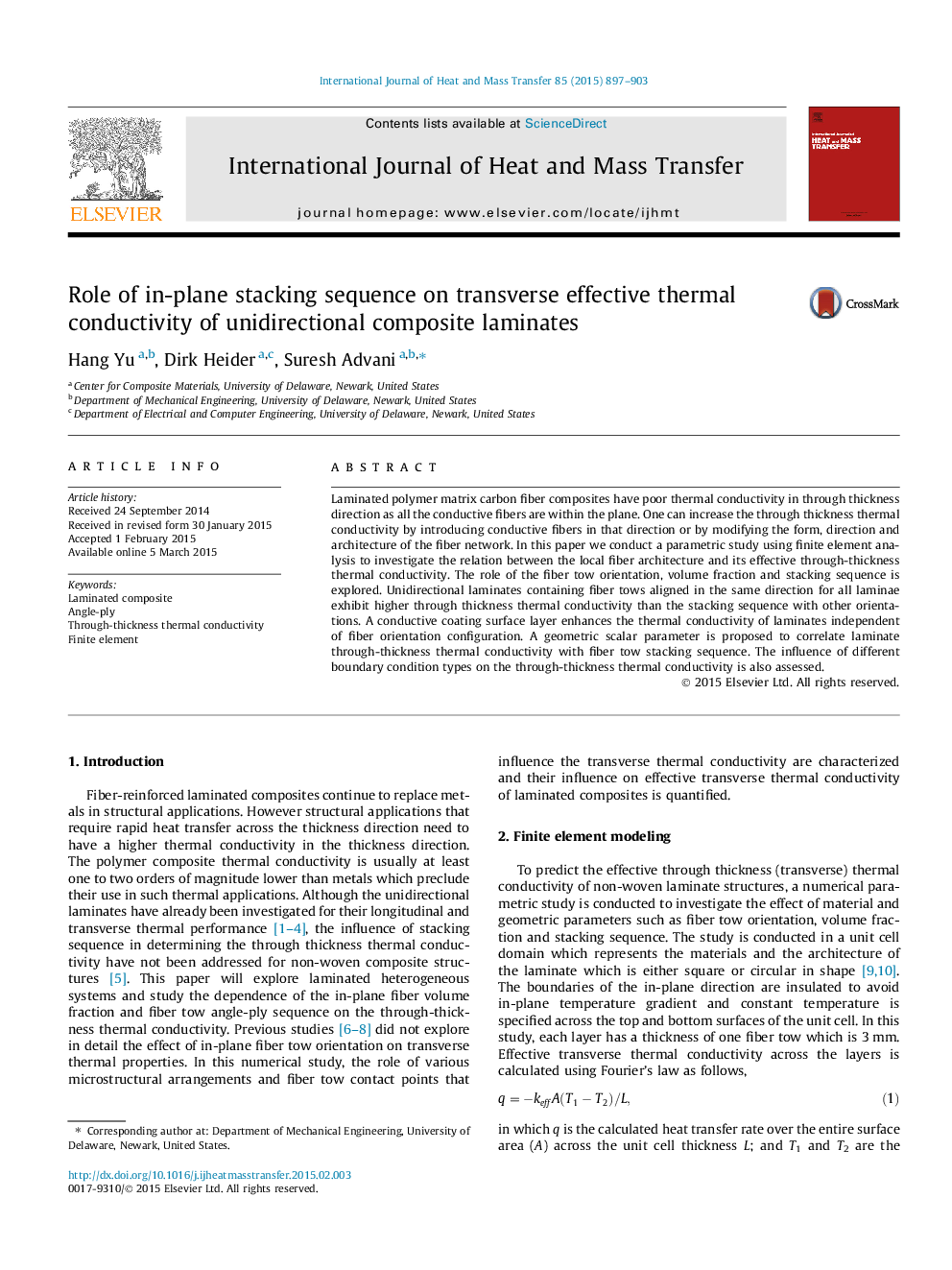| Article ID | Journal | Published Year | Pages | File Type |
|---|---|---|---|---|
| 7056722 | International Journal of Heat and Mass Transfer | 2015 | 7 Pages |
Abstract
Laminated polymer matrix carbon fiber composites have poor thermal conductivity in through thickness direction as all the conductive fibers are within the plane. One can increase the through thickness thermal conductivity by introducing conductive fibers in that direction or by modifying the form, direction and architecture of the fiber network. In this paper we conduct a parametric study using finite element analysis to investigate the relation between the local fiber architecture and its effective through-thickness thermal conductivity. The role of the fiber tow orientation, volume fraction and stacking sequence is explored. Unidirectional laminates containing fiber tows aligned in the same direction for all laminae exhibit higher through thickness thermal conductivity than the stacking sequence with other orientations. A conductive coating surface layer enhances the thermal conductivity of laminates independent of fiber orientation configuration. A geometric scalar parameter is proposed to correlate laminate through-thickness thermal conductivity with fiber tow stacking sequence. The influence of different boundary condition types on the through-thickness thermal conductivity is also assessed.
Related Topics
Physical Sciences and Engineering
Chemical Engineering
Fluid Flow and Transfer Processes
Authors
Hang Yu, Dirk Heider, Suresh Advani,
